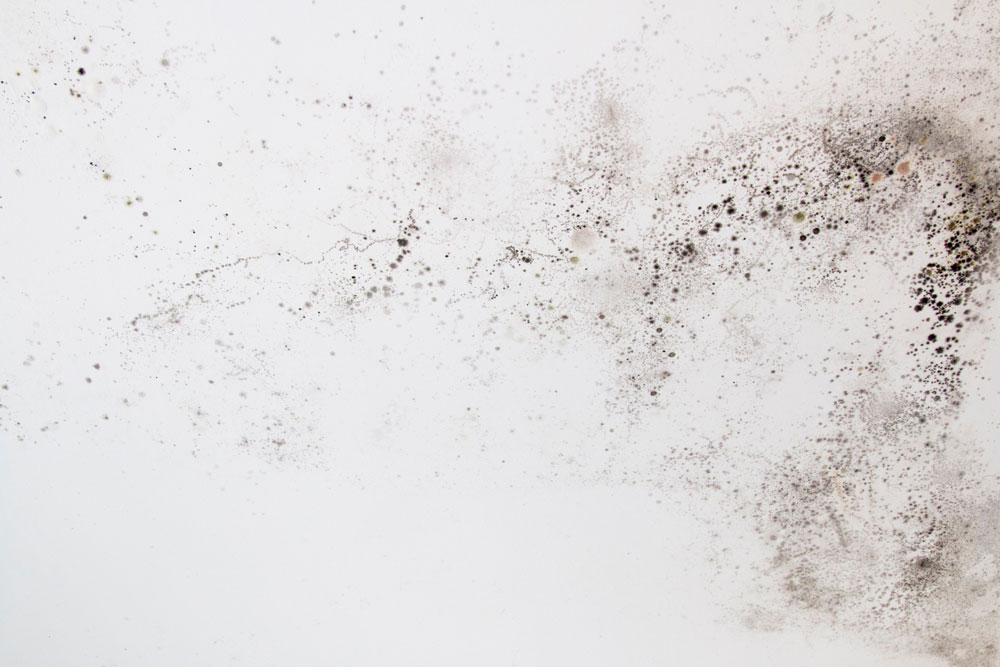How To Get Rid Of Black Mould On Walls
 CONTENTS
CONTENTS
- What is black mould?
- What causes mould to grow on walls?
- What are the signs of black mould?
- How to remove black mould
- Tips to prevent the growth of black mould on walls
- Get in touch
Black mould does not just leave unsightly dark stains and spots on your walls, ceilings, and belongings. It could cause serious health problems and sometimes releases toxic substances.
Here at ICE Cleaning, we provide fast and effective mould removal services. Our Dewpoint-accredited technicians can remove all the mould from the surfaces and the air, and each service comes with a lifetime guarantee*.
Keep reading to learn why black mould is growing on your walls and how to eliminate it.
*subject to advisories
What is black mould?
Black mould includes lots of different species of mould that look dark green, brown, or black. Like most kinds of mould, its spores are dangerous to touch, inhale, or ingest.
Some species of black mould occasionally produce mycotoxins, toxic compounds which can put people’s health at risk. The most common types that grow in the home include:
- Cladosporium: It forms dark stains that look like spider-webs, and can produce mycotoxins and volatile organic compounds (VOCs). Most kinds are not dangerous to humans.
- Alternaria: This fungus can release dangerous mycotoxins and phytotoxins. It may trigger allergic reactions and exacerbate asthma.
- Stachybotrys chartarum: It is known as ‘toxic black mould’ and can release mycotoxins. It is the most dangerous type of black mould and usually grows on building materials, like wallpaper and gypsum, and therefore thrives on walls.
- Aspergillus niger: This normally grows on fruit and vegetables, and some strains can release mycotoxins.
What causes mould to grow on walls?
Mould is caused by excess moisture, such as humidity, steam, or condensation, as well as poor ventilation. As a result, it is usually found in the kitchen and bathroom where there tends to be lots of moisture in the air. It can grow on walls specifically for several reasons:
- Steam has condensed on the walls
- There is poor ventilation behind furniture
- Clothes have been dried in the room and the moist air has become trapped
- There is penetrating damp and rising damp in your property
What are the signs of black mould?
The most obvious symptom is black or dark coloured spots in your property. Sometimes, it can have a furry appearance or look like a black stain. Another indicator is a musty or earthy smell in your property. This is caused by the VOCs or chemicals released by the mould.
Should you have been experiencing an allergic reaction in your property, such as a runny nose or skin rash, or your asthma has gotten worse, this could also be a sign of exposure.
Keep an eye out for early indicators of potential mould growth, like damp and water damage, too. You can tell if mould is likely to grow on your walls if your wallpaper is warped, bubbled, or off-colour.
How to remove black mould
Although there are lots of products that claim to kill mould, it is recommended that you don’t attempt to clean it yourself.
Firstly, you will probably only tackle the surface spores, and could leave some traces of it behind which might grow back. When you scrub the mould, you could release spores up into the air which you may inhale.
As mentioned previously, some species can be particularly dangerous, making black mould removal especially risky, as well.
Only professional cleaners with specialist products, personal protective equipment, and the knowledge of how to get rid of mould will make your property mould-free.
Tips to prevent the growth of black mould on walls
- Identify any damp in your home and have it repaired.
- Keep your property well ventilated. Avoid drying clothes indoors, install extractor fans in the bathroom and kitchen to remove steam and moist air, and regularly open windows.
- Make sure humidity levels stay below 50% with dehumidifiers and air purifiers.
- Prevent mould problems by clearing out guttering and ensuring water does not accumulate around your property.
- Should a flood occur in your home, have the water removed, the property dried out, and the affected area cleaned within 48 hours.
- Move furniture away from the wall so air can flow around the room.
Get in touch
ICE Cleaning’s technicians can remove mould from both domestic and commercial properties, wherever they are in the UK. They are available day and night, 365 days a year, and can be on site in a matter of hours in an emergency.
Our technicians will diagnose the root cause of the mould, as well, and advise on how to prevent it returning.
To book our mould remediation services, give our team a call at 0208 066 0360 or send an email to enquiries@icecleaning.co.uk.

Speak with me today,
I’m here to help
By asking you a few questions either via phone or email I can immediately provide a realistic estimation of the cost.
You’re in good company. We’ve cleaned for the following commercial clients… View all

Why choose us?
- Cater to a wide variety of cleaning situations
- Nationwide coverage, available 24/7
- Cater to commercial and domestic clients
- Free survey provided prior to quotation
- Emergency response team
- Offer a bespoke service designed to suit all your needs
- All technicians hold professional health and safety qualifications, including BICSc, IOSH, Dewpoint Professional & Safe Contractor
We’re fully accredited
We place best practise, professional expertise and health and safety at the core of our business. We’re fully compliant with all legal obligations. You can view a list of our accreditations below, or visit our Health & Safety page for more information.











-RGB-small.1707319151.jpg)




















